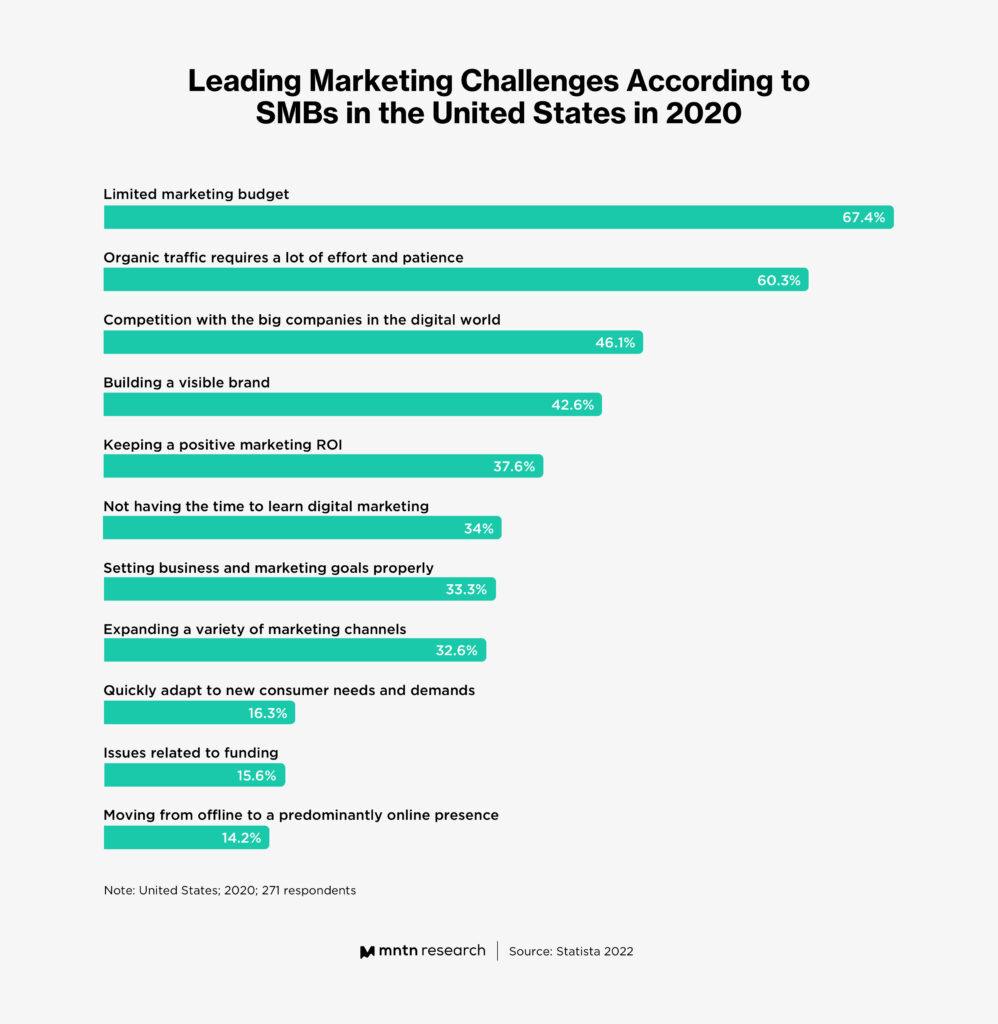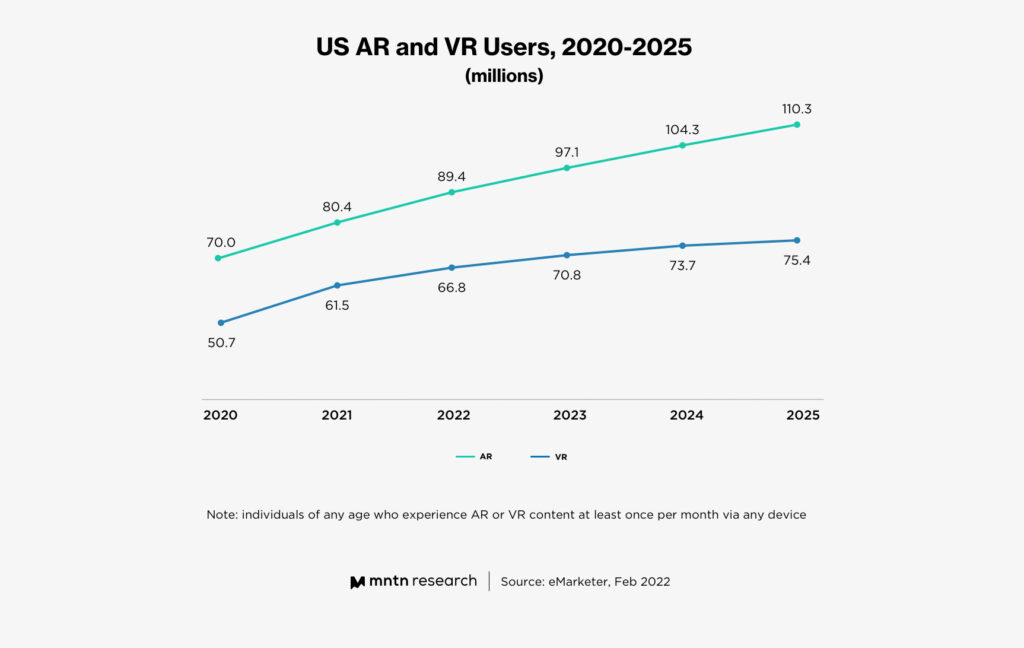Analysis
The Time for SMBs to Leverage Augmented Reality is Now
by Jacob Trussell8 min read
Abstract
- Marketers across industries are feeling squeezed as economic insecurity makes waves through adland
- SMBs are primed to be most affected by these impacts, and must identify creative solutions for continuing to attract audiences.
- Immersive video experiences, like Augmented Reality, provide SMBs the opportunity to compete with industry leaders as they get their advertising seen by a wide audience.
- 88% of medium-sized businesses are already testing AR experiences
When an economic crisis rocks the world, who stands to weather the storm the best? Is it the mega brands with oodles of ad spend, or the small mom-and-pop shops who have historically fought to compete with the giants of the corporate world?
We’re leading the witness a little bit here, but when consumer buying behaviors are rocked by waves of financial uncertainty like they have over these past few years, it’s small to midsize businesses (SMBs) who stand to be impacted the most. They just simply don’t have the same safety nets that larger organizations can afford, whether it’s expansive sales teams or a robust marketing budget. If there was ever a time that businesses across the world could have used some extra support across their organization, it’s right now.
When surveyed in 2020, SMB marketers felt their biggest challenges were:
- Limited budget 67.4%
- Competition with big companies 46.1%
- Building visible brand 42.6%
- Expanding a variety of channels 32.6%

Between the recession and the lingering specter of COVID-19, the way we shop has been upended in a manner that can only be described as permanent. Despite our desire to get back to a sense of normalcy, brands can’t afford to simply reengage with everything that’s worked for them before– they must look to the future. And the future is bright with innovative video experiences that consumers are coming to expect.
How This Is Impacting SMBs
Many of these experiences are happening on social media, which is fortuitous for SMBs as 57% of SMB marketers agree that social media is the best avenue to advertise their businesses. And as video is the most engaged with content type across the internet, a specific opportunity arises. An opportunity that is a hallmark social media experience that SMBs should leverage more frequently if they want to compete, and stand out, from their business rivals: Augmented Reality (AR).
With over one billion AR users across the globe, the potential to drive performance (and hit your KPIs) is, well, too good to snooze on. Stick with us and we’ll break down all the benefits SMBs are destined to find by giving their customers the gift of augmented reality.
Immerse Your Brand in a New Reality
Ever since Snapchat let users put flower crowns and puppy dog ears on their selfies, augmented reality has been snaking its way into our everyday lives. For instance, while QR codes may not fit the public perception of an AR exactly, it’s still a solid use case on why consumers are more than ready to take the plunge into this innovative video experience.
Remember that Coinbase Super Bowl commercial that forced a nationwide audience off their couches to scan a bouncing QR code? That action–using your camera to interact with an object that transforms into something else via your phone–is the core experience of augmented reality. Just, in this case, you get something way cooler than yet another crypto app.
These digitally immersive experiences are best represented by the creative filters and lenses Instagram and Snapchat users love to interact with and share between friends. This could be in the form of a World Lenses, that places AR effects into everyday environments, or Face Lenses, that superimposes creative effects on a user’s facial features. AR transforms the passive experience of being served an ad into an interactive one, blurring the lines between native content and branded placements. That’s why 71% of consumers say they would shop more often if they used AR and 55% admitted that shopping with AR makes the experience more fun and exciting? Because AR is branded advertisements that give their customers a uniquely fun experience and not a brazen sales pitch.
When consumers couldn’t visit brick-and-mortar retailers in-person, they moved to digital storefronts to try on products–all from the security of their home. This became a boon for retailers, as augmented reality led to 94% increase in conversion rates, and a 40% decrease in returns when a 3D product visualization was offered.

As Insider Intelligence’s analysis shows, this growth of AR adoption is steady and linear, and is expected to reach 110.3 million users by 2025. This has led to a surge of new AR users throughout the United States, from 70 million in 2020 to 89.4 million in 2022. We all know what happened in those two years that left consumers hungry for content that takes them out of their homes, even if it’s only digitally. As the world stayed indoors, audiences became glued to their devices where they could morph their faces into aliens, play games of Heads Up, or digitally terraform their living rooms into a Game of Thrones-esque kingdom.
What One Brand is Already Doing
Because each platform comes with its own unique set of quirks, augmented reality effects are best utilized today for brand awareness campaigns. For instance, QuickFrame by MNTN partnered with Smartwater on an influencer campaign to draw attention to their new line of products by utilizing some quirky ad creative.
As the audience is captivated by the creative, you have the opportunity to deliver subtle value props that’ll feel more natural and authentic than if you just created a run-of-the-mill CTA-driven commercial. New use cases will emerge as more platforms grow their AR capabilities, creating more opportunities for brands to convert on–and off–a mobile device.
Low-Cost Solutions to Big Budget Effects
To be completely transparent, augmented reality experiences can be a major cost driver for the campaign you are creating it for. If you want something as slick as an IKEA promo, you’re going to need an IKEA sized budget.
That’s where the tools of individual social media platforms come in. There are a suite of free to use features available for you in-app to create your own custom augmented reality filters and lenses. Think of this as a way to give your customers a taste of AR to discover if your customers are hungry for the style. That way, you’ll have a solid foundation to decide if you should invest even more in these experiences. Two of the most cost-efficient options you can choose from are on two of the most popular apps:
Snapchat
You do need to pay a fee to run a custom Snapchat filters, but creating the filter itself is relatively inexpensive and is one of the more affordable options for advertising on social media.
For instance, creating an on-demand geofilter starts at $5. Pricing depends mostly on the size of your design, where you’re running it, and how long it will run for. You can let it run anywhere between an hour and 30 days.
The best thing about creating your own custom AR filters on Instagram? They are 100% free to make.
The One Takeaway to Rule Them All
“Give your audience a gift, not an ask” is the perfect summation for how you need to think about AR.
What do we mean by that? Augmented reality ads can’t be thought of in the same way as standard video ads. That’s because modern consumers want advertisements that feel worthy of their time and attention. They don’t want ad creative that’s overtly selling them a product; they want an ad that gives them something of value, whether it’s offering a free trial, access to a community, or a unique virtual experience. And that all begins by producing an AR effect that, you know, is actually worth engaging in.
SMBs: It’s Time to Start Your (AR) Engines
Despite its current popularity, augmented reality is just getting started. Big tech is funneling heavy investments into developing new hardware and software, with Meta in 2021 investing an astonishing $10 billion in Reality Labs, their research team developing innovative AR/VR technology. In Q4 2021 alone, venture capitalists investments in AR/VR startups reached $1.9 billion.
And while in 2020, only 1% of retailers were using AR, current research shows that 88% of medium sized businesses are already using or testing AR for some purposes
If you want to leverage augmented reality in future advertising campaigns you’ve got to start testing and learning today. You don’t want to be caught researching tactics while your competition is already on their fifteenth campaign. But what’s so great about the moment AR is having right now is that everybody’s in the experimentation phase. That means there are no hardline rules for what does and doesn’t work in AR ads. So don’t be afraid to take big swings!
Depending on your media mix and verticals you’re targeting, try out different styles and creative approaches to discover what resonates the loudest with your audience. Above all else, and to underline the gift-giving ethos of this way of thinking about AR, overly branded augmented reality experiences can instigate an air of inauthenticity, as the user is more aware that this cool thing they are doing was created so they would buy a product. Remember, it’s not about asking your customers to take action, it’s about giving them a clever and fun experience so they see your brand in a completely different light.
Subscribe to the MNTN Research Weekly
Sign up to receive a weekly feed of curated research, sent straight to your inbox.